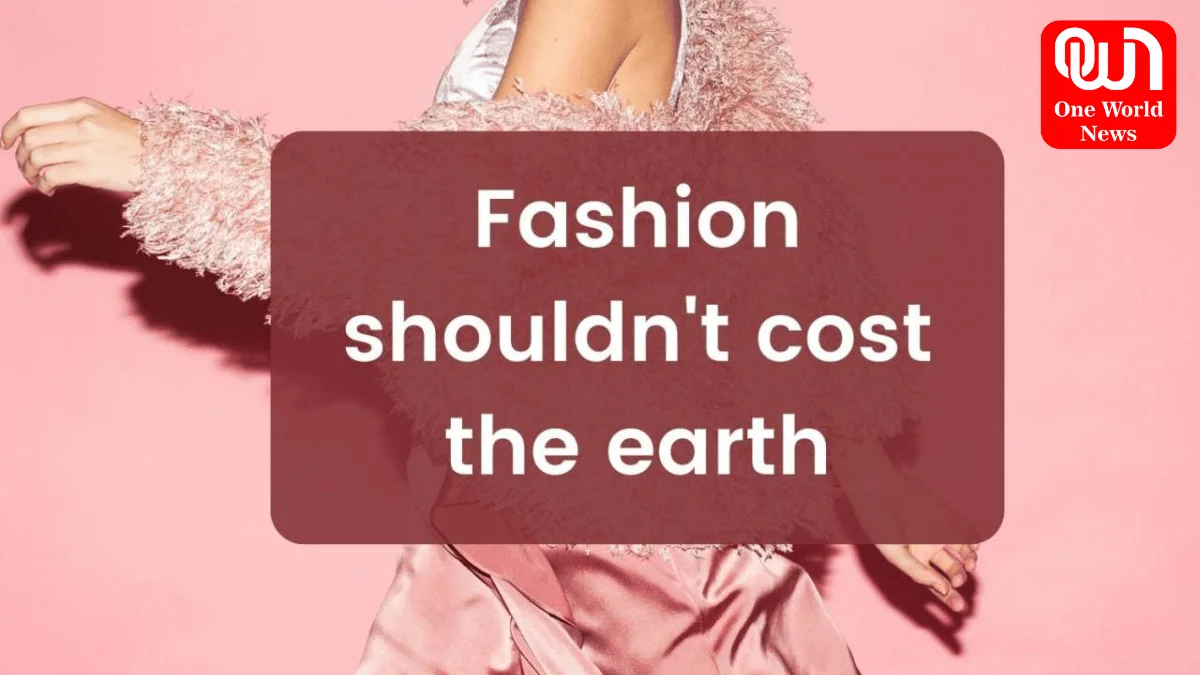The Dark Side of Fast Fashion: Understanding the Problem
Fast fashion gives a complicated and interconnected set of environmental, social, and ethical demanding situations that require urgent attention and collective motion.
What is fast fashion and why is it a problem?
Fast fashion is a period used to describe the speedy manufacturing of less expensive apparel collections that mimic present-day fashion trends. While this commercial enterprise version has revolutionized the fashion industry, providing customers with affordable and on-trend apparel options, it comes with several environmental, social, and ethical issues. Understanding the impact of speedy style is critical for purchasers, policymakers, and industry stakeholders alike. Here’s a closer look at what rapid fashion is and why it is a trouble:
What is Fast Fashion?
Fast fashion refers back to the mass manufacturing of clothing which might be quick and affordably synthetic to fulfil client demand for modern-day and low-cost garb. This model is characterised by brief production cycles, rapid turnover of stock, and low costs finished via cost-slicing measures consisting of outsourcing production to low-wage countries, usage of inexpensive materials, and minimising fine requirements.
Why is Fast Fashion a Problem?
- Environmental Impact – The fast fashion industry is one of the most polluting industries globally, contributing to environmental degradation through excessive useful resource consumption, water pollution, and greenhouse gas emissions. The manufacturing of artificial fibres, which includes polyester, nylon, and acrylic, relies on fossil fuels and releases harmful chemicals into the surroundings during production and disposal. Additionally, the overproduction and disposal of clothes make a contribution to landfill waste and microplastic pollutants in oceans and waterways.
Read More:- Fast Fashion is good to look at, but not for the environment!
- Human Rights Violations- The speedy style industry regularly is predicated on exploitative hard work practices, including low wages, long hours, risky running situations, and shortage of exertion rights protections, particularly in developing countries wherein garment manufacturing is outsourced. Workers, mostly ladies and children, face exploitation, discrimination, and abuse in garment factories, with little recourse for searching for justice or improving working situations.
- Waste and Overconsumption: The fast fashion phenomenon promotes a culture of use-and-discard clothing that never lasts more than a fashion season before new merchandise comes up. Thus, fast turnover has resulted in excessive consumption, waste and environmental degradation. Based on the data of the Ellen MacArthur Foundation, one waste truck equivalent of textiles is landfilled or burned every day, and this is a symptom of the problem of wasting.
- Ethical Concerns: The fast fashion business has been accused of immoral violations, such as disruption of the chain of supply, use of forced labour and child labour, abuse of weak workers, and violation of indigenous rights. While in the race of earnings fast fashion manufacturers miss the ethical considerations. Human rights, environmental sustainability, and social responsibility are falling victim to the pursuit of growth and market domination.
- Impact on Local Economies: The proliferation of fast style has had destructive consequences on nearby economies and traditional artisanal practices in developing countries. Small-scale producers and nearby artisans are often not able to compete with the low fees and mass production skills of fast-style brands, leading to a lack of livelihoods, cultural heritage, and network resilience.
We’re now on WhatsApp. Click to join.
Addressing the Problem of Fast Fashion:
- Consumer Education- Raise cognisance amongst consumers about the environmental, social, and moral implications of speedy style. Encourage conscious intake conduct, inclusive of buying less, deciding on high-quality over amount, and assisting sustainable and ethical manufacturers.
- Regulatory Measures: Implement rules and rules to maintain fast fashion corporations accountable for their environmental and hard work practices. Enact law to enhance transparency in delivery chains, put in force exertion rights protections, and reduce the environmental footprint of fabric manufacturing and waste.
Read More:- Top fashion trends for spring 2024: Sheer whites, retro revival, sustainable chic and more
- Promote Sustainable Practices: Encourage the adoption of sustainable and moral practices in the fashion industry, from design and production to distribution and intake. Support projects that prioritize eco-friendly substances, fair labour requirements, waste discounts, and circular economy principles.
- Support Ethical Brands: Choose to guide ethical and sustainable fashion manufacturers that prioritize transparency, fairness, and environmental obligation. Look for certifications together with Fair Trade, GOTS (Global Organic Textile Standard), and B Corp to become aware of brands dedicated to moral and sustainable practices.
5. Shift to Slow Fashion: Embrace slow fashion motion, which promotes aware intake, undying design, first-class craftsmanship, and a sustainable manufacturing technique. Invest in timeless pieces, repair and upcycle apparel, and take part in clothing swaps and second-hand purchasing to reduce waste and support a more sustainable style atmosphere.
In conclusion, Fast fashion gives a complicated and interconnected set of environmental, social, and ethical demanding situations that require urgent attention and collective motion. By knowing the problems related to speedy fashion and advocating for sustainable and moral alternatives, we will work toward building an extra equitable, sustainable, and responsible fashion enterprise that respects each human being and the planet.
Like this post?
Register at One World News to never miss out on videos, celeb interviews, and best reads.








